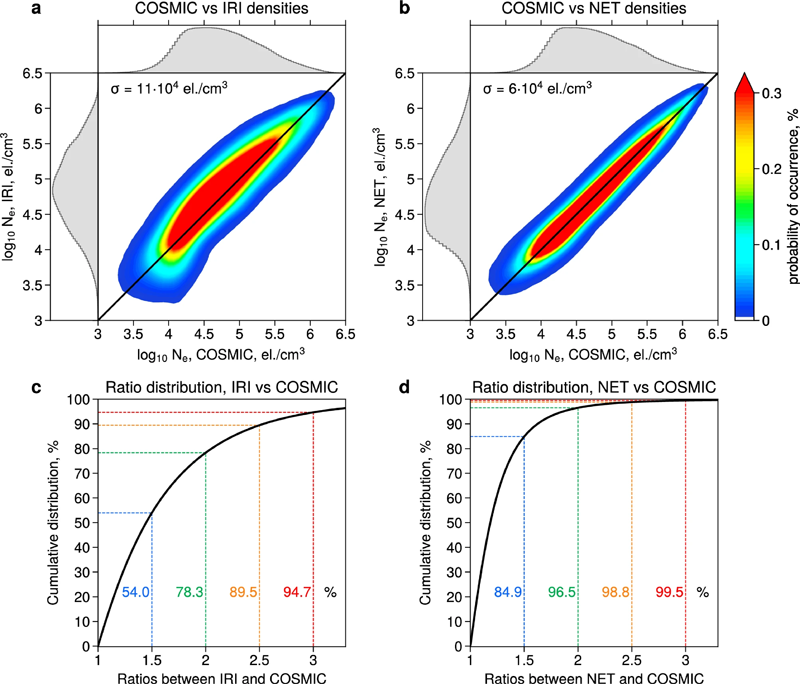Report from the ISSI Team #523 “Imaging the Invisible: Unveiling the Global Structure of Earth’s Dynamic Magnetosphere” led by N. Buzulukova (US)
A paper by Samsonov et al. (2022) uses global X-ray imaging of the Earth’s magnetopause as a novel method that will provide us with knowledge about the shape of the magnetopause. The authors use two numerical global MHD models (SWMF and LFM) to simulate the X-ray emissivity in the magnetosheath and cusps, which are sources of soft X-rays due to charge exchange between solar wind ions and exospheric neutrals. Methods developed to extract the information about magnetopause location from synthetic X-ray images will allow to use the data from the future soft X-ray imagers for monitoring of large areas of the magnetopause. This methodology will allow to validate/modify our current modeling tools and approaches and revolutionize the understanding of magnetospheric response to external driving conditions.
A paper by Holappa and Buzulukova (2022) combines 24 years of observations of energetic particle measurements by NOAA POES satellites with simulation results from a global model of the Earth’s magnetosphere to study the effect of the interplanetary magnetic field (IMF) By component on the ring current. The authors showed that there is an explicit By-dependence of the Dst index, which is a measure of the ring current intensity, and that this dependence can be accounted for by a modified solar wind coupling function that includes a correction factor depending on the dipole tilt and IMF By. This study provides a novel contribution to understanding the complex and seasonally varying effects of IMF By on the magnetospheric dynamics by means of combining global datasets and global models.
A recent study by Stephens et al. (2023) uses machine learning techniques for data-mining of 26 years of magnetometer data from multiple satellites to reconstruct the global structure and evolution of reconnection sites, called X-lines, as well as different types of magnetic nulls, called O-lines, in the magnetotail. The study compares the reconstructed location of X-lines and O-lines with observations from MMS mission and finds a good agreement in most cases. The results from the study have potential to revolutionize our understanding of reconnection process on a global level, suggesting that reconnection in the magnetotail is reproducible with historic data sets, and the global 3D structure of the magnetospheric reconnection is reflected in global activity indices, their trends, and the solar wind energy input.

2D histograms of electron density observed by COSMIC data on the test set versus those predicted by the IRI model (a), and the novel neural network NET model (b). (c) Cumulative distribution of ratios between the IRI model and the COSMIC data on the test set; (d) Cumulative distribution of ratios between the developed NET model and the COSMIC data on the test set. Credit: Smirnov et al., 2023, Nature Scientific Reports (CC BY 4.0)
A recent paper by Smirnov et al. (2023) presents a novel neural network model of electron density in the topside ionosphere. The model has been developed and tested using 19 years of GNSS radio occultation data. The model consists of four parameters that describe the shape, height, and gradient of the F2-peak. The model is tested against in situ measurements from several missions and shows excellent agreement with the observations, outperforming the state-of-the-art International Reference Ionosphere (IRI) model by up to an order of magnitude, especially at 100-200 km above the F2-layer peak. This study provides a paradigm shift in ionospheric research, by demonstrating that ionospheric densities can be reconstructed with very high fidelity with the neural network model. The new model could be valuable for a variety of applications, including space weather forecasting, satellite navigation, and communication systems.
Contact: Natalia Buzulukova
References:
Holappa, L., and N. Y. Buzulukova (2022) “Explicit IMF By-dependence of energetic protons and the ring current.” Geophysical Research Letters, 49 (8), https://doi.org/10.1029/2022GL098031
Samsonov, A., Sembay, S., Read, A., Carter, J. A., Branduardi-Raymont, G., Sibeck, D., & Escoubet, P. (2022). Finding magnetopause standoff distance using a Soft X-ray Imager: 2. Methods to analyze 2-D X-ray images. Journal of Geophysical Research: Space Physics, 127, e2022JA030850. https://doi.org/10.1029/2022JA030850
Smirnov, A., Shprits, Y., Prol, F. et al. A novel neural network model of Earth’s topside ionosphere. Sci Rep 13, 1303 (2023). https://doi.org/10.1038/s41598-023-28034-z
Stephens, G. K., Sitnov, M. I., Weigel, R. S., Turner, D. L., Tsyganenko, N. A., Rogers, A. J., et al. (2023). Global structure of magnetotail reconnection revealed by mining space magnetometer data. Journal of Geophysical Research: Space Physics, 128, e2022JA031066. https://doi.org/10.1029/2022JA031066


